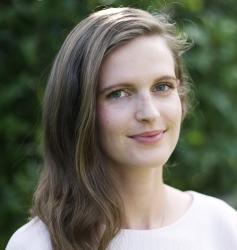When out and about in downtown Reykjavík, you might have noticed a huge wall on Tryggvagata with an abstract mural depicting the city’s harbour. The mosaic portrays old sailing ships, reminiscent of those in ‘Pirates of the Caribbean,’ alongside industrial machinery.

This mural was created by the widely recognized Icelandic artist Gerður Helgadóttir (1928-1975) in 1973. Known for her abstract three-dimensional art, Gerður has created numerous well-known public artworks, including the stained glass windows of Skálholt Cathedral and Kópavogur Church.
Gerðarsafn is a museum created in her honour and memory. Its new show “SKÚLPTÚR / SKÚLPTÚR” (“SCULPTURE / SCULPTURE”) is the third in an annual series in which contemporary pieces are contrasted with Gerður’s work to draw connections between her oeuvre and contemporary sculpture. This time the theme is exploring ideas of the old and the new in relation to Gerður’s output.
Organ orchestra
A free-spirited, whimsical soul, Styrmir Örn Guðmundsson is one of the exhibiting artists. Inspired by the name of the exhibition, Styrmir’s contribution explores sculpture as a medium by creating a hybrid of art and musical instruments. He has crafted a series of ceramic instruments that correspond to the vital organs of the human body.
“The Udu drum I have made represents a stomach,” he says, taking delight in the sound. “It looks like a stomach and when I hit it—sounds like a stomach to me.”
Other instruments include an ocarina flute (portrayed as a liver), a double flute (lungs), and a synthesizer (a brain). The instruments originate from different corners of the world, serving as an ode to Gerður. “Gerður was intrigued by world cultures,” Styrmir says. “She also loved music. My instruments speak to that.”
When he reflects on Gerður’s contribution to Icelandic art, Styrmir’s demeanour turns more serious. “I am honoured to have this chance to conduct a dialogue with her,” he says. “This exhibit is a conversation between different time periods. It showcases a point in time when the ‘new’ enters the ‘old’ scene.”
The new and the old
Áslaug Friðjónsdóttir is another artist in the show. A distinctly calm character with large green eyes, Áslaug has participated in exhibitions around Iceland, Europe, and the United States over the past decade. With a focus on abstract three-dimensional art, her work evokes images of urban landscapes and construction sites.
“I often use industrial materials used for house building, like concrete, plaster, grout, linoleum flooring and wood,” she says. “The material speaks to our modern times and ethos but at the same time hints at classical art when artists used marble and natural stone.”
An avant-garde presence
One of Áslaug’s pieces for the exhibition is made of concrete taken from the ruins of demolished buildings in Reykjavík. She has added playdough to the shapes—an act suitably evocative of the idea behind this exhibit to bring the old and the new together.
Yet Áslaug highlights that Gerður is not simply an artist of the past who represents the ‘old.’ “She was one of the few Icelandic female artists to gain recognition for her work during her lifetime,” she says. “She was ahead of her time in many ways—she didn’t just fall into trends. She is a huge influence of mine. She continues to be avant-garde and inspire, even though she is part of the past.”
Information: SKÚLPTÚR / SKÚLPTÚR is open now until October 7th at the Gerðarsafn museum
Buy subscriptions, t-shirts and more from our shop right here!



































